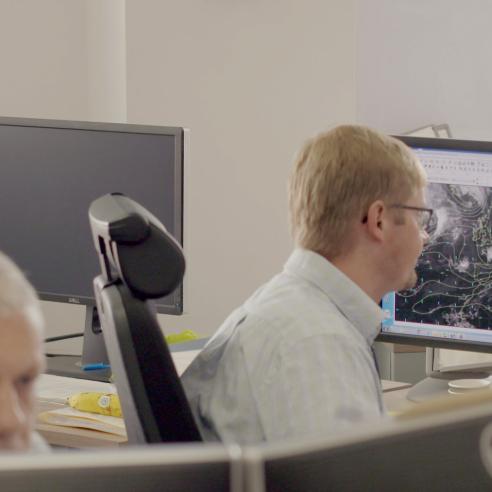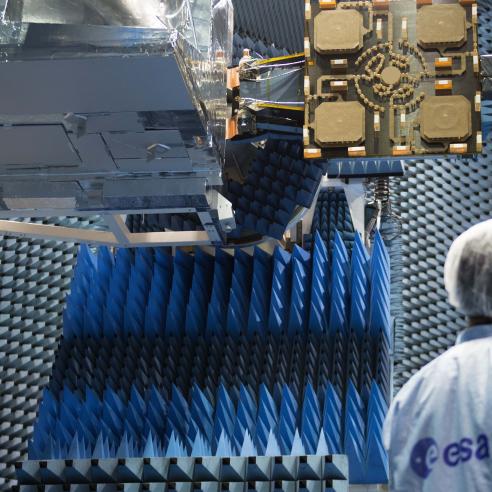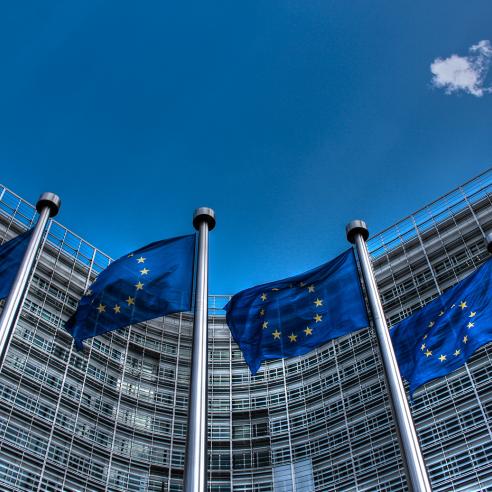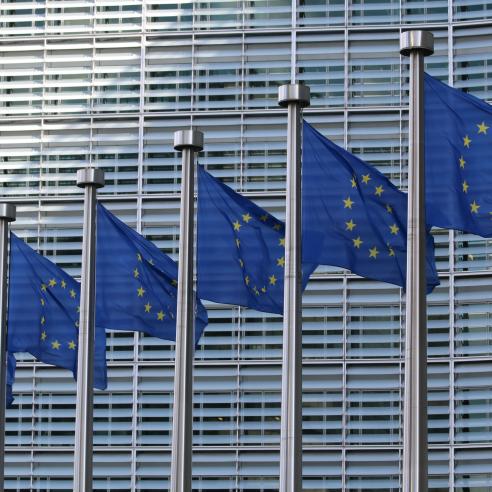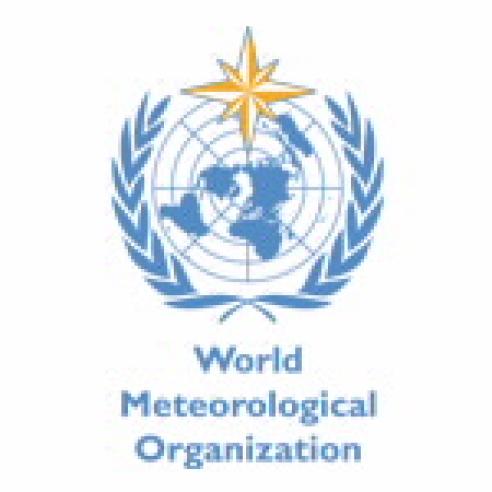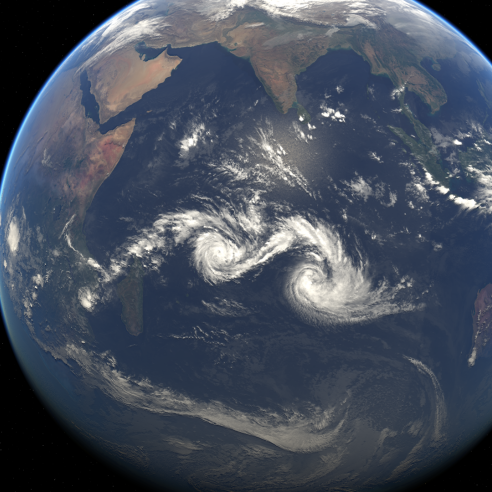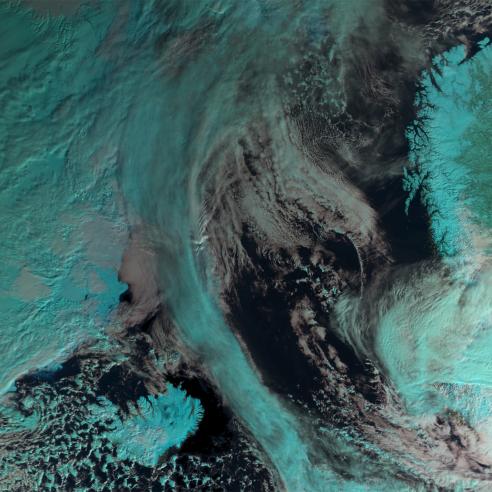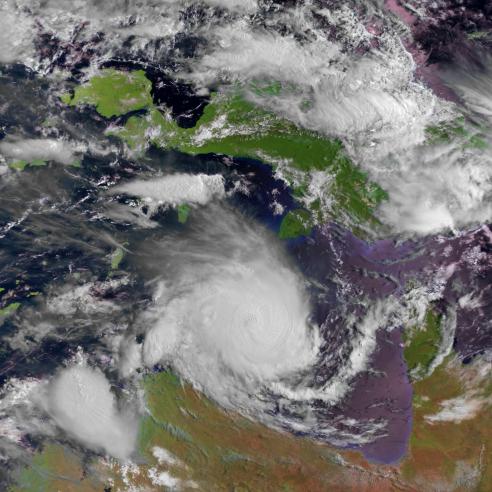13 November 2020
15 April 2020
EUMETSAT Strategy:
1. Extend the user base for EUMETSAT data, products and services in EUMETSAT Member and Cooperating States and in WMO Members.
2. Be an active partner in European and global initiatives of relevance to space-based weather, climate and environmental monitoring.
Adhering to its strategy, from 2008 EUMETSAT participated in FP7 activities related to GEONETCast , which resulted in the following benefits:
- new EUMETCast stations procured and installed in Africa and South America;
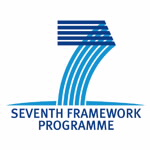
- new users identified in Africa, South America and Asia;
- new products disseminated through GEONETCast, covering all societal benefit areas defined by the intergovernmental Group on Earth Observations (GEO)
- inclusion of Copernicus and third party operational marine data in EUMETCast, enlarging EUMETSAT’s position in operational oceanography;
- improved visibility of GEO and the GEONETCast initiative.
These activities were implemented in a coordinated European context, in close cooperation with other European Meteorological Infrastructure (EMI) partners, while constituting at that time, a significant part of the EUMETSAT contribution to the Climate Monitoring from Space.
African-European Georesources Observation System (AEGOS)
Consortium
The AEGOS project was led by the Bureau de Recherches Géologiques et Minières, France, (BRGM).
Timeframe
December 2008 – November 2011
Objective
To set up the preparatory phase for the building of an information system, containing accessible data and knowledge on African geological resources including mineral resources, raw materials, groundwater and energy (georesources).
Our role
EUMETSAT’s main task was to broadcast geophysical-related data produced and/or used by the AEGOS project to Africa through GEONETCast.
Results
During the dissemination period, the data were regularly retrieved in Africa using existing EUMETCast stations (AMESD or PUMA).
For more information, please visit the AEGOS website.
Assessment of ICT for Disaster Management in Africa (AÏDA)
Consortium
The AÏDA project was coordinated by the Flemish Institute for Technological Research (VITO), Belgium, which led a consortium of eight beneficiaries (four from Africa, four from Europe).
Timeframe
2007 – 2009
Objective
To acquire and share knowledge on affordable information and communication technology (ICT) solutions to support disaster risk management in Africa and to disseminate the knowledge/best practices amongst all stakeholders, across different hazard communities.
Our role
EUMETSAT’s main task was to broadcast, through GEONETCast, fire-related data produced by the South African Council for Scientific and Industrial Research (CSIR) to the Forest Fire Association (FFA) in South Africa.
EUMETSAT led the so-called “Work Package 4” (WP4), which aimed at demonstrating the usefulness of GEONETCast as a contributing system to an overall alert system, through a test case involving the CSIR and the FFA.
Results
The activities conducted in WP4 allowed for the improvement of the Council for Scientific and Industrial Research (CSIR) Advance Fire Information System (AFIS), which is today deployed across various countries in Africa and worldwide.
For more information, please visit the AIDA project website.
DevCoCast
Consortium
The DevCoCast project was coordinated by the Flemish Institute for Technological Research (VITO), Belgium, which led a consortium of 19 beneficiaries (five from Africa, seven from South America and eight from Europe).
Timeframe
May 2008 – September 2011
Objective
To involve developing countries in the GEONETCast initiative and to set up a strong user and provider base.
Our role
EUMETSAT’s main task was to broadcast data produced or managed by the various partners of the projects, using both EUMETCast and the GEONETCast network.
On top of this, EUMETSAT also supported the installation of new GEONETCast stations by providing advice and remote support to users when necessary and contributed to capacity-building activities.
Results
The DevCoCast project disseminated existing environmental added-value data (in-situ as well as satellite-based) from various sources in Africa, South and Central America, Asia and Europe via GEONETCast to a broad range of end-users in developing countries.
A major focus was capacity building, which included training, user support, networking, and outreach.
To find out more, please visit the DevCoCast project website.
EAMNet
Consortium
The EAMNet project was coordinated by the Plymouth Marine Laboratory (PML), UK, which led a consortium of 10 beneficiaries from Africa and Europe.
Timeframe
March 2010 – July 2013
Objective
To build a network linking Earth observation (EO) information providers, user networks and centres of excellence in Europe and Africa, in the area of coastal and marine observations for sustainable development in Africa.
The overall aim was to improve the use of EO data for coastal and ocean monitoring towards an Africa-wide observation system (GOOS-Africa).
Our role
EUMETSAT’s main role in the EAMNet project was to disseminate additional marine-related data to Africa, to provide users with support to set up GEONETCast stations, to monitor data transmissions via EUMETCast, to contribute to the newsletter and to the EU-AU action plan for GMES Africa, and to represent EAMNet at GEONETCast demonstration events.
Results
The network undertook capacity building and maintenance, building on existing infrastructure and expertise in Africa.
EAMNet provided an interface between Copernicus (formerly GMES)-related core and downstream services and R&D projects (notably MyOcean) and African initiatives (e.g. AMESD) with the emerging GMES-Africa initiative.
It also provided further links with GEO through the use of GEONETCast.
For more information, please visit the EAMNet website.
ERA-CLIM
Consortium
ERA-CLIM was coordinated by the European Centre for Medium-Range Weather Forecasts (ECMWF), which led a consortium of nine beneficiaries.
Timeframe
2011 - 2014
Objective
The goal of the project was to prepare input data and assimilation systems for a new global atmospheric reanalysis of the 20th century.
This involved recovery and digitisation of early meteorological observations, reprocessing and recalibration of radiance measurements from satellites, and preparation of climate-quality atmospheric forcing data and boundary conditions.
Our role
As part of the ERA-CLIM project, EUMETSAT delivered:
- reprocessed Atmospheric Motion Vector (AMV) and Clear Sky Radiance (CSR) IASI data products from Meteosat-8 and Meteosat-9 for the period January 2004 to the present, with documentation,
- reprocessed AMV and CSR products from Meteosat-2 to Meteosat-7 for the period May 1982 to the present, with documentation,
- reprocessed AMV products from Metop’s AVHRR instrument for the period January 2007 to the present, with documentation,
- reprocessed radio-occultation data from CHAMP, GRACE, COSMIC and GRAS for the period September 2001 to the present, with documentation and
- reprocessed total ozone products from Metop’s GOME-2 and IASI instruments for the period July 2006 to the present, with documentation.
Results
ERA-CLIM developed observational datasets suitable for global climate studies, focusing on the past 100 years.
These datasets included atmospheric, oceanic, and terrestrial observations from a variety of sources, high-resolution global reanalysis products of the observations, and associated data-quality information needed for climate applications.
For more information, please visit the ERA-CLIM project website.
ERA-CLIM2
Consortium
ERA-CLIM2 was a collaborative project coordinated by the European Centre for Medium-Range Weather Forecasts (ECMWF) and operated by a 16-member consortium.
Timeframe
2014 – 2016
Objective
The core objective of the ERA-CLIM2 project was to apply and extend the current global reanalysis capability in Europe, in order to meet the challenging requirements for climate monitoring, climate research, and the development of climate services.
ERA-CLIM2 was a follow-on project, which made use of, strengthened and consolidated the work begun in ERA-CLIM.
This project aimed to achieve a considerable expansion of scope from the atmospheric and land surface domains to include coupling with other major components of the climate system.
Our role
EUMETSAT supported this project by reprocessing instrument data records at Level 1 for input into the reanalysis.
Results
The project made EUMETSAT’s climate data accessible to a broader range of users, which is in line with the organisation’s strategic goal of expanding the user base.
For more information, please visit the ERA-CLIM2 project website.
European GEOSS Network (EUGENE)
Consortium
The EUGENE project was led by Deutsches Luft und Raumfahrt (DLR), Germany, and included four partners.
Timeframe
2009 – 2011
Objective
The main objective of the EUGENE project was to foster collaboration between pan-European organisations in the field of Earth observation and to strengthen the coordination of national and regional programmes and organisations in their work for GEO.
EUGENE proposed a structured European GEO approach for three GEO societal benefit areas: water, climate and disasters.
Our role
EUMETSAT took a leading role in the EUGENE activities dedicated to climate, which aimed to analyse the contribution of different actors in the field of climate monitoring and related issues in Europe.
EUMETSAT’s contribution to the EUGENE project was concentrated in the first year, during which the “EUGENE Climate Status Quo Report” was produced. It addressed the existing status of European climate capabilities and capacity (with a focus on observations and modelling), international coordination and cooperation, and strengths, gaps, challenges and opportunities.
Results
EUGENE outcomes served as inputs to the Helsinki conference “GMES and Climate Change” in June 2011, and were taken into account by the European Commission in defining and planning for the Copernicus climate services.
For more information, please visit the EUGENE website.
GMES – Partnership for User Requirements Evaluation (GMES-PURE)
Consortium
GMES-PURE was coordinated by EUMETSAT and had, as partners, the Rutherford Appleton Laboratory of the UK Science & Technical Facilities Council, the Finnish Meteorological Institute and EuroGOOS (European Global Ocean Observing System) represented by the Swedish Meteorological and Hydrological Institute and the Danish Meteorological Institute.
Timeframe
January 2013 – December 2014
Objective
GMES-PURE supported the European Commission in defining a generic process model for the involvement of users in the definition and evolution of Copernicus requirements, driving the evolution of the Copernicus monitoring services and the next generation of the Copernicus space component.
This process was specifically applied in the domains of atmosphere and marine environment monitoring.
Our role
EUMETSAT acted as project coordinator.
Results
Working in close coordination with existing service providers, the project established a requirements framework providing evolving user requirements, service specifications, service data and technical requirements for the space infrastructure, as well as traceability between the requirements at different levels.
A brochure summarising the project can be found here.
All requirements can be retrieved in a zip file here.
Further information about the project can be found here.
COordinating Earth observation data validation for RE-analysis for CLIMAte ServiceS (CORE-CLIMAX)
Consortium
CORE-CLIMAX was coordinated by the University of Twente’s Faculty of Geo-Information Science and Earth Observation (ITC), The Netherlands, which led a consortium of nine beneficiaries (seven from Europe and two from China).
Timeframe
January 2013 – June 2015
Objective
The purpose of the CORE-CLIMAX project was to coordinate the identification of available physical measurements, which can be reconciled with previously existing data records, to form long-time series.
Our role
EUMETSAT coordinated Work Package 2 (WP2) and contributed to WP4 of the project. This included contributing to a European assessment for the capacity to generate climate data records suitable for monitoring climate variability and change, and documenting the process.
The work was conducted in support of the Copernicus Climate Change Service (C3S) and other international activities, such as the establishment of the architecture for climate monitoring from space conducted by major space agencies.
EUMETSAT’s role also covered a description of the structured process to derive Essential Climate Variable (ECV) data records.
Results
This project helped to substantiate how the Copernicus space component and in-situ observations and products can contribute to climate variability and climate change analyses, by establishing the extent to which Copernicus observations complement existing Climate Data Records (CDRs).
For more information on this project, please visit the CORDIS webpage.
Quality Assurance for Essential Climate Variables (QA4ECV)
Consortium
The QA4ECV project was coordinated by the Royal Netherlands Meteorological Institute (KNMI), The Netherlands, with a consortium of 17 beneficiaries.
Timeframe
January 2014 – March 2018
Objective
The major goal of QA4ECV was the creation of a prototype and blueprint for an implementable Quality Assurance (QA) framework for ECV climate data records.
Our role
EUMETSAT provided IASI data for atmospheric and Meteosat data for land surface ECVs.
Results
QA4ECV performed a detailed practical demonstration of the QA concept, concentrating on six ECVs (terrestrial and atmosphere), for which homogenised climate data records were developed and evaluated based on the communities best practices.
The project also harmonised, improved, and quality-assured independent validation data to ensure the best possible QA for ECV climate data records.
The QA framework formed the basis for Quality Assurance in the Copernicus Climate Change Service.
More information can be found on the QA4ECV page here.


